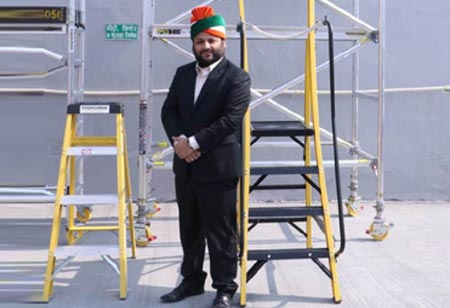Imagine, you are having a morning tea and checking the daily news when you come across some disturbing news about a worker died at the construction site falling down from a ladder; or workers injured because of the Bamboo pillars hung loose; or might be any other reason which points to a serious concern for Safety at Construction Sites. How would you react watching this news at the early hour when the day begins? Can’t we start each day on some happy notes? Can’t we mandate the safety guidelines along with the checking and validating equipment used in the workplace?
In this era of industrial growth, modern equipment, technology advancements, and mobility world; safety is not just a practice to be followed; it reflects an essence of the values, an organization believes in. But unfortunately, even after such a prominent emphasis by our legislative bodies, there is still a definite gap in the requirements to be met for occupational safety. Companies should come forward with the aim to fully stop the injuries & casualties by 100 per cent at any workplace, may be in construction site or home. I along with my Young man family strongly believe that by providing workers with the right tools and training, we can professionalize industry and construction in India, creating a safe work environment for all. Companies and Industries that are serious regarding protecting their employees should do far more than react after an injury or rely on awareness based safety efforts and usually, this approach only delays the next injury. Safety is not just about responding to injuries but is about the ongoing identification of exposure, the implementation of control systems, and assuring these controls are used to neutralize the exposure. Nowadays it has become very important to implement a proper safety culture in an organization.
Manufacturing has emerged as one of the high growth sectors in India. According to the Global
Manufacturing Competitiveness Index, India is expected to become the fifth largest manufacturing country in the world by the end of year 2020. Government aims to achieve 25 per cent GDP share and 100 million new jobs in the sector by 2022. Under the Make in India initiative, the Government of India aims to increase the share of the manufacturing sector to the gross domestic product (GDP) to 25 per cent by 2022, from 16 per cent, and to create 100 million new jobs by 2022. This is an evolution of Industry 4.0. Thus sectors like Constructions, Real Estate, and Power will be in boom for a decade or more. Hence, safety at workplace is the next concern for the next two decades. Organizations should be focused on Safety-first educating users how to safely work at heights and our products are built to prevent misuse and limit risk. We should manufacture products that are easy to set up and safe to use, improving safety when compared to competitors.
-
Safety is not just about responding to injuries but is about the ongoing identification of exposure, the implementation of control systems, and assuring these controls are used to neutralize the exposure
Vanjul Jain, Managing Director & CEO, Youngman India
The manufacturing sector of India has the potential to reach US$ 1 trillion by 2025 and India is expected to rank amongst the top three growth economies and manufacturing destination of the world by the year 2020. The implementation of the Goods and Services Tax (GST) will make India a common market with a GDP of US$ 2.5 trillion along with a population of 1.32 billion people, which will be a big draw for investors.
With impetus on developing industrial corridors and smart cities, the government aims to ensure holistic development of the nation. The corridors would further assist in integrating, monitoring and developing a conducive environment for the industrial development and will promote advance practices in manufacturing. With a high scope of development defined, let’s not put worker’s life at stake forgetting Risks and Safety measures. Indirect costs such as loss of worker life, productivity, poor quality of goods and services, and damage to customer relations and public image can be two to four times the direct costs.
Finally, I would like to wrap up with my final thoughts:
- Let’s become a bridge for this gap and fully eradicate or minimize these accidents and their root causes.
- Let’s innovate better ways of working with clients to solve their Safety issues.
With vision of Safer India Better World, we should all be united and move forward to diminish the perilous nature of industries globally.
